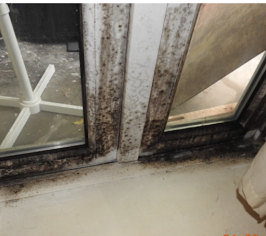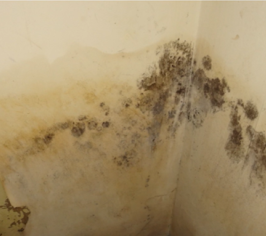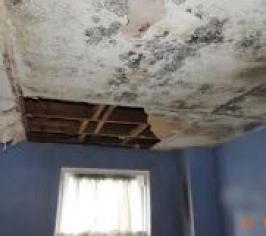Identifying damp
Damp and mould in your home can have different causes. These are listed below:
Condensation damp

Condensation damp happens when moisture generated inside the home cools and condenses onto colder parts of the buildings (for example window frames, corners and low points on walls behind sofas or wardrobes). This is the most common form of damp.
Penetrating damp

Penetrating damp is water that gets into the building from outside due to defects in the walls, roofs, windows or floors.
Rising damp

Rising damp is moisture from the ground that rises up through parts of the buildings in contact with the ground (walls and floors). Often it is due to defective damp proof courses and membranes.
Traumatic damp

Traumatic damp can be caused by leaking water from waste and heating pipes, overflowing baths or sinks, burst pipes or defective water storage vessels inside the building. Traumatic damp can also originate from outside the property, for example from another building or from environmental flooding.
These forms of damp can form mould which is a type of fungus which grows in moist environments. Mould can cause adverse health effects as well as damage to buildings.
